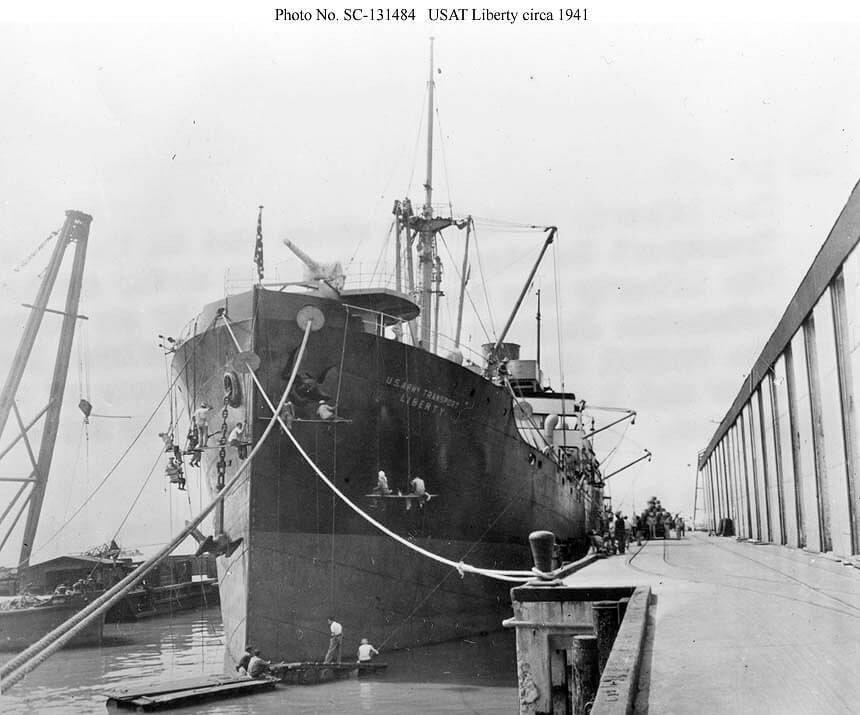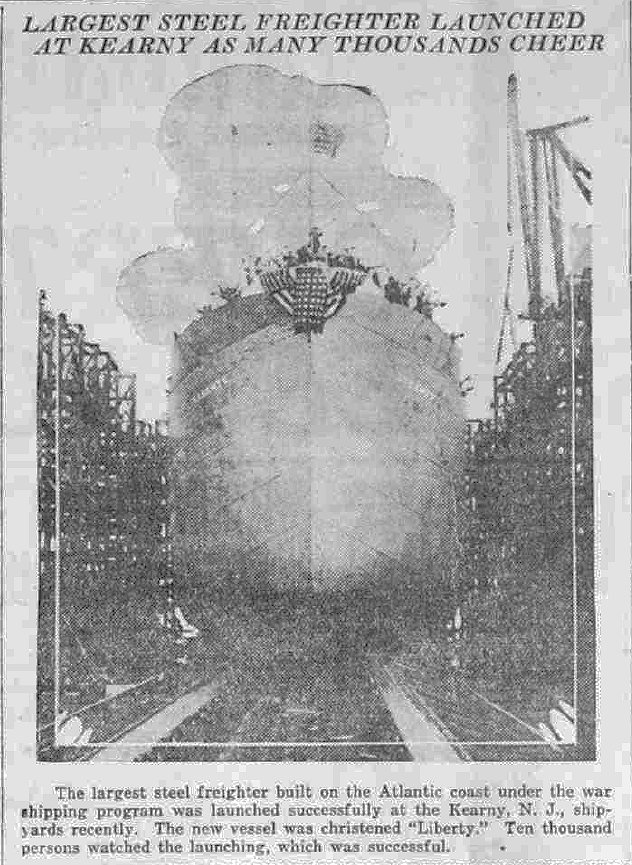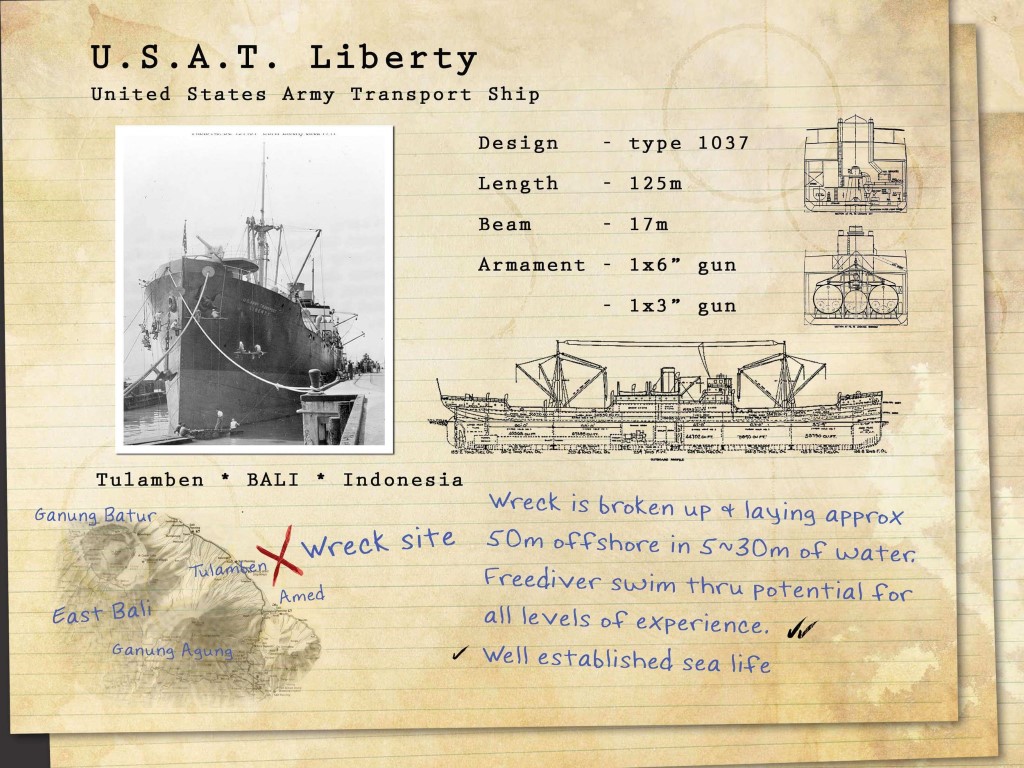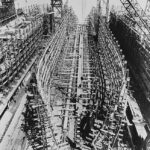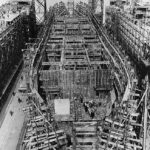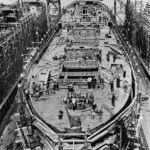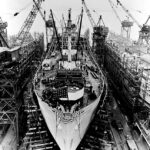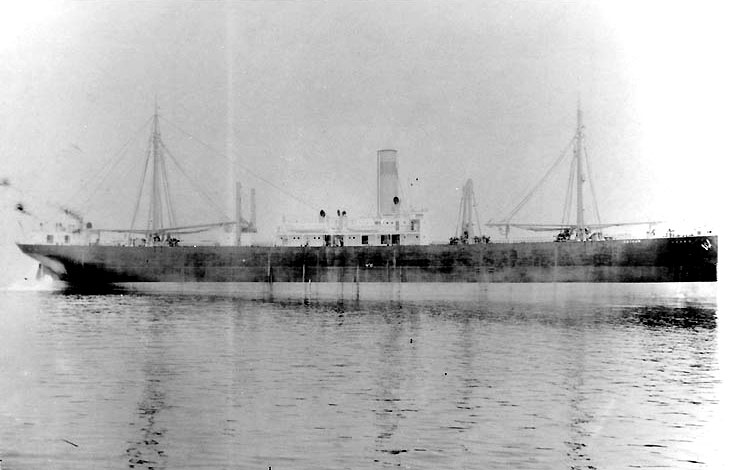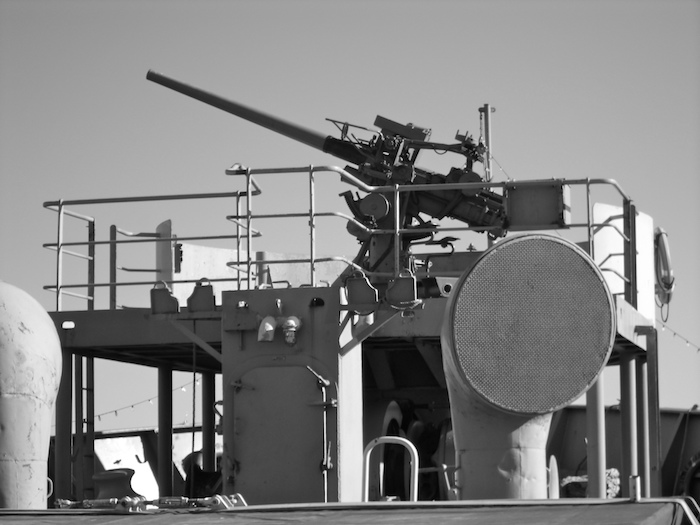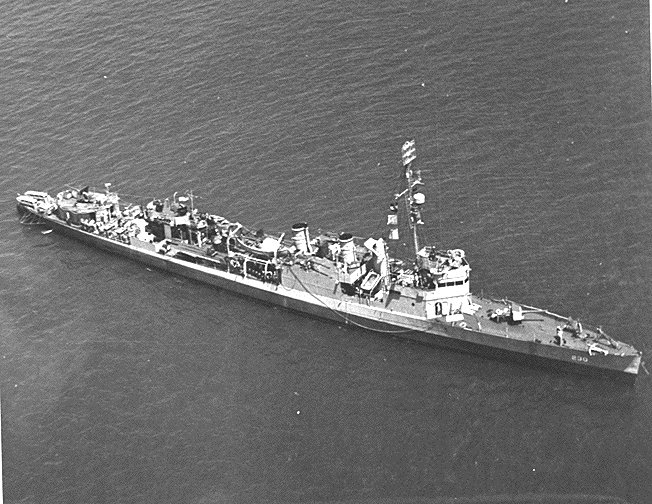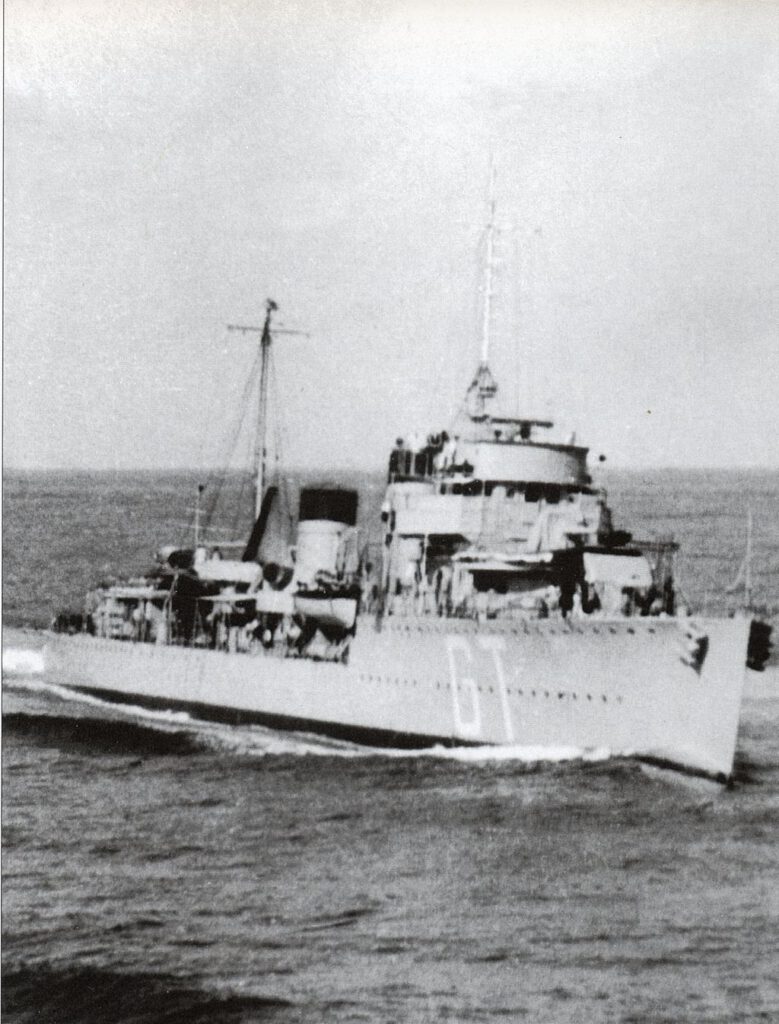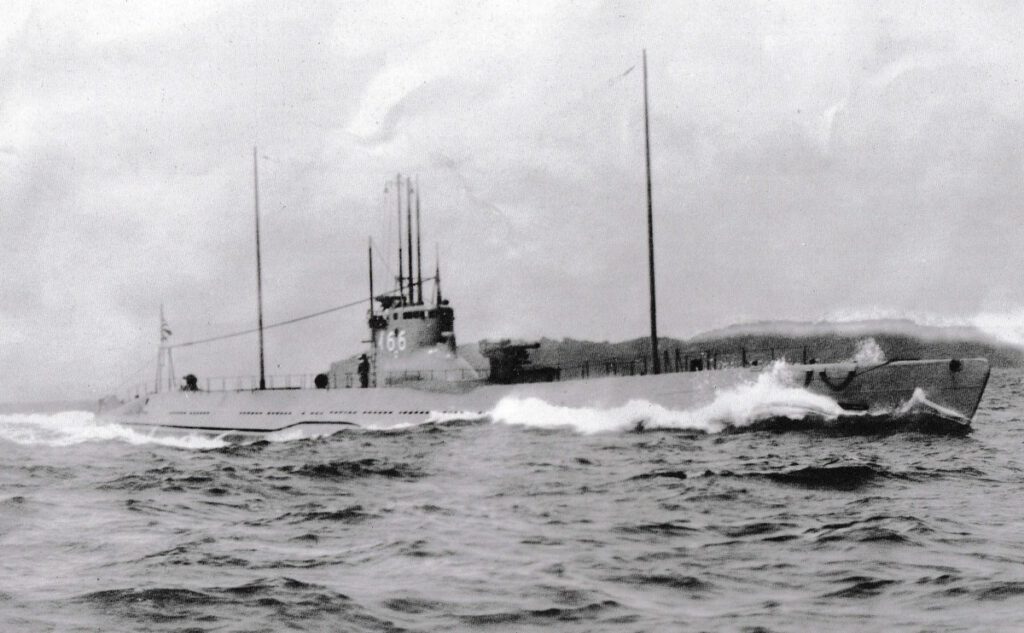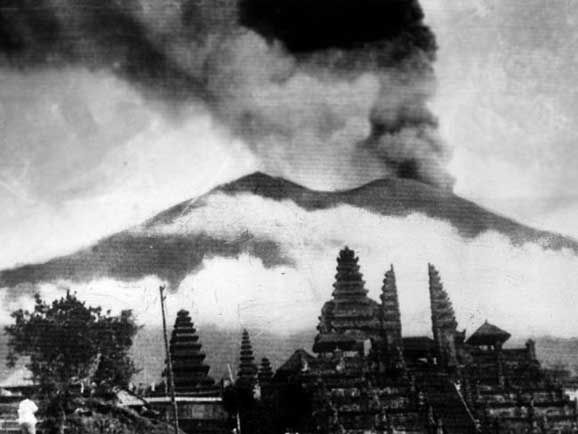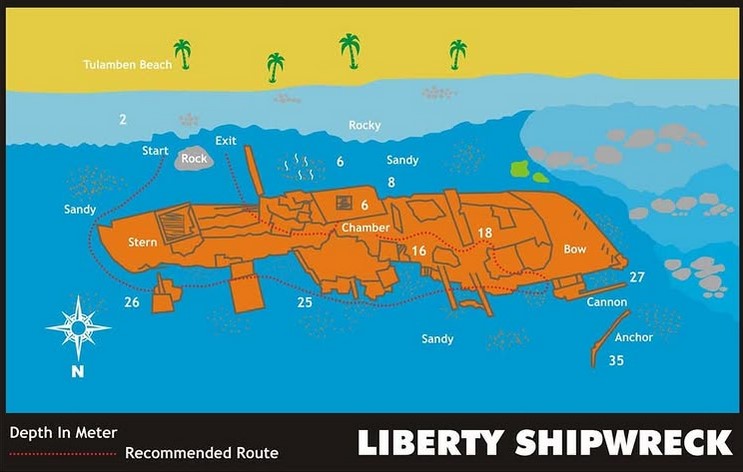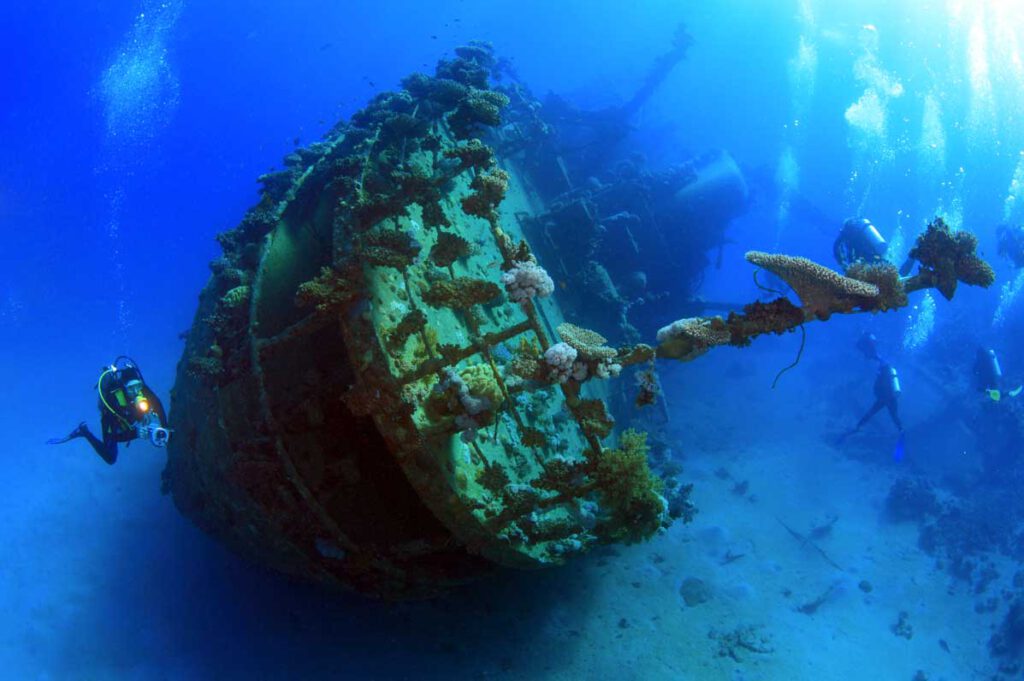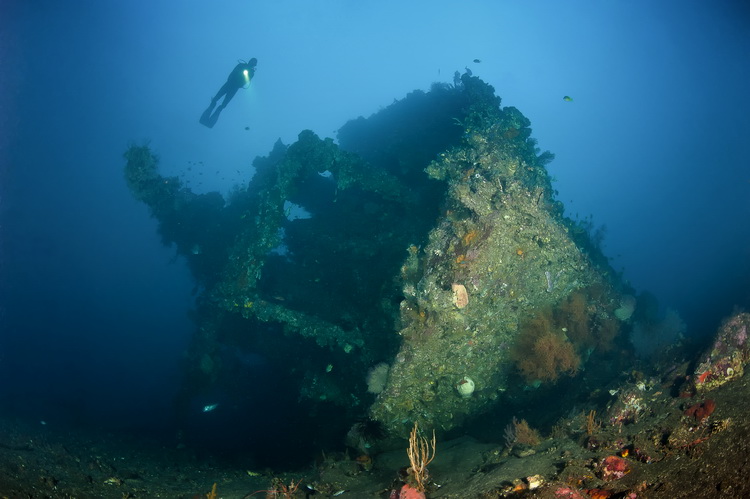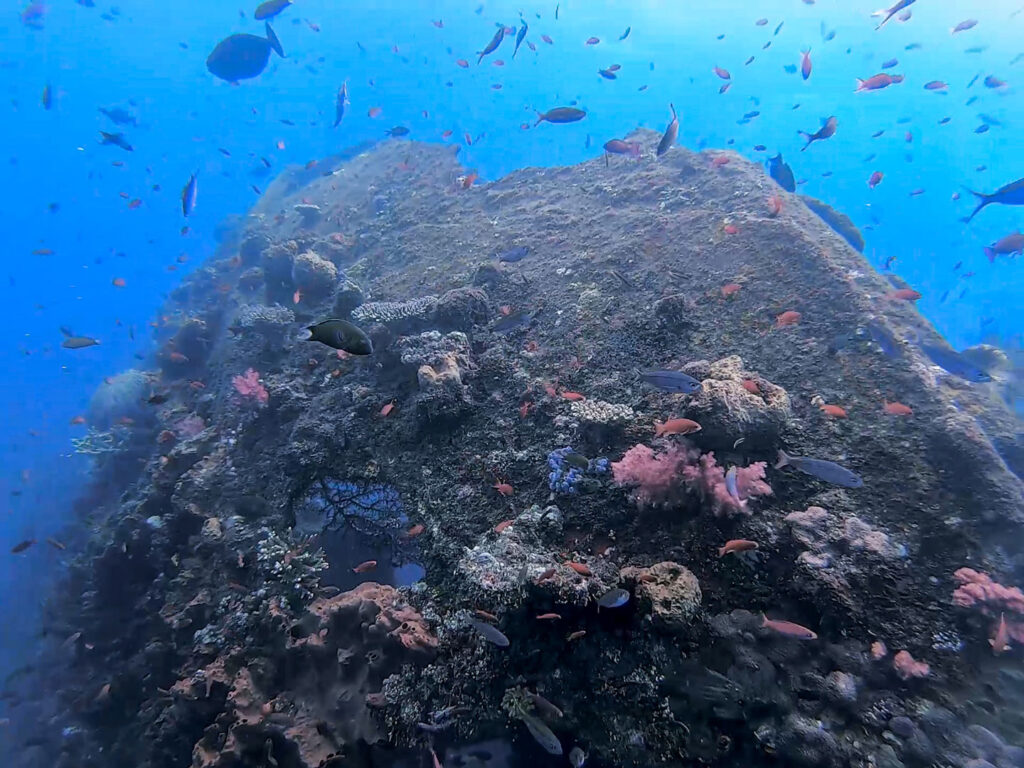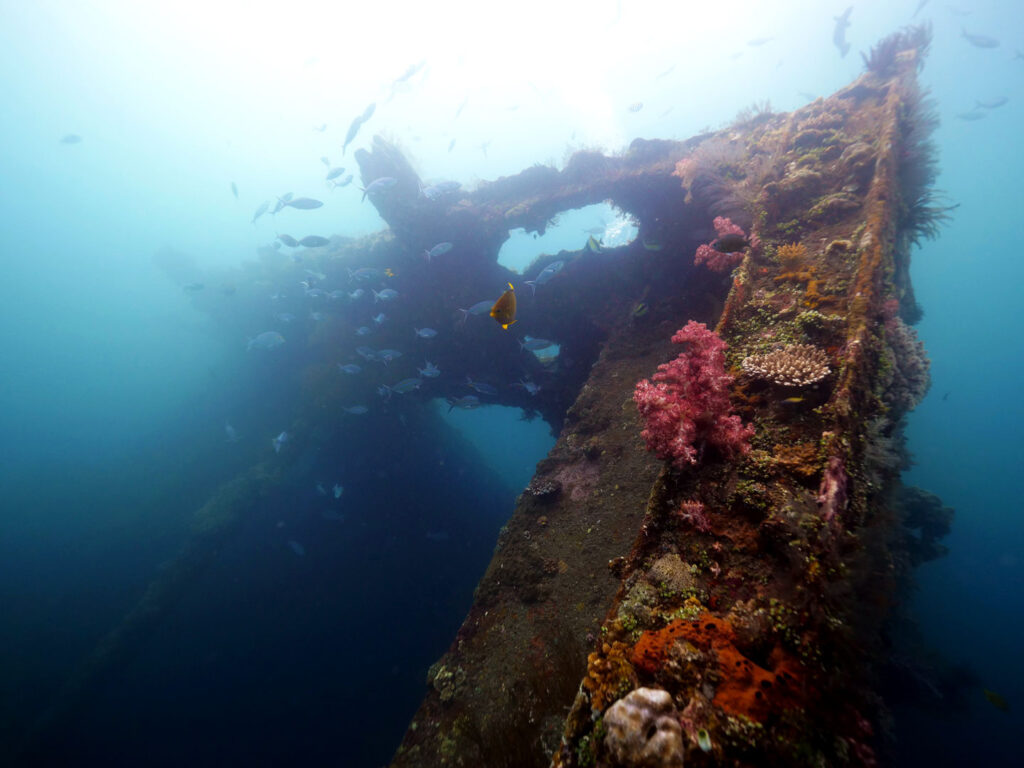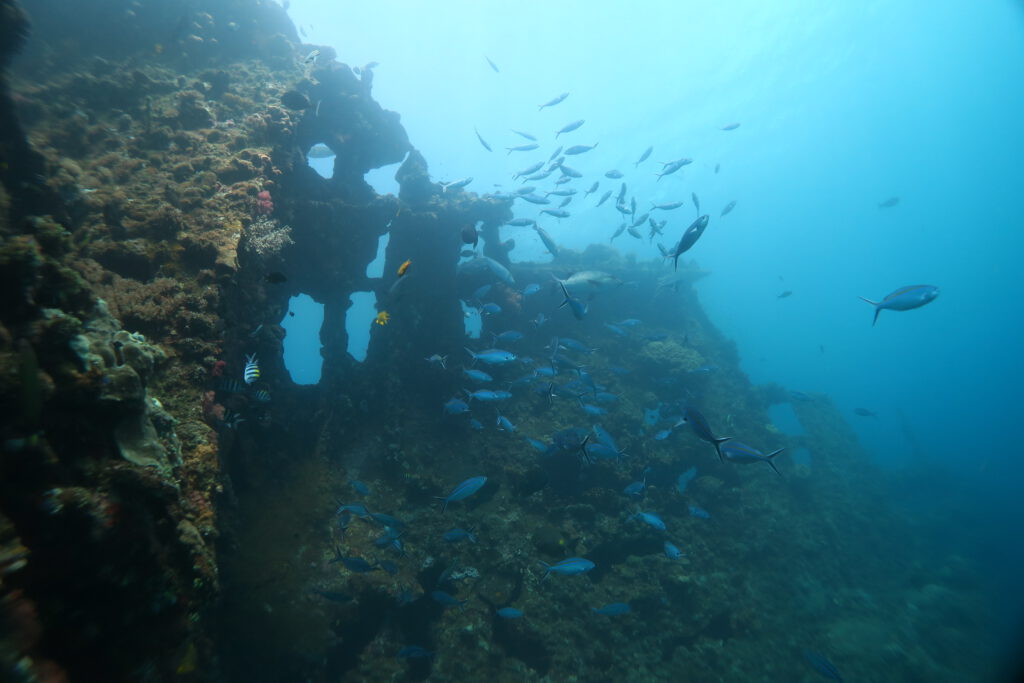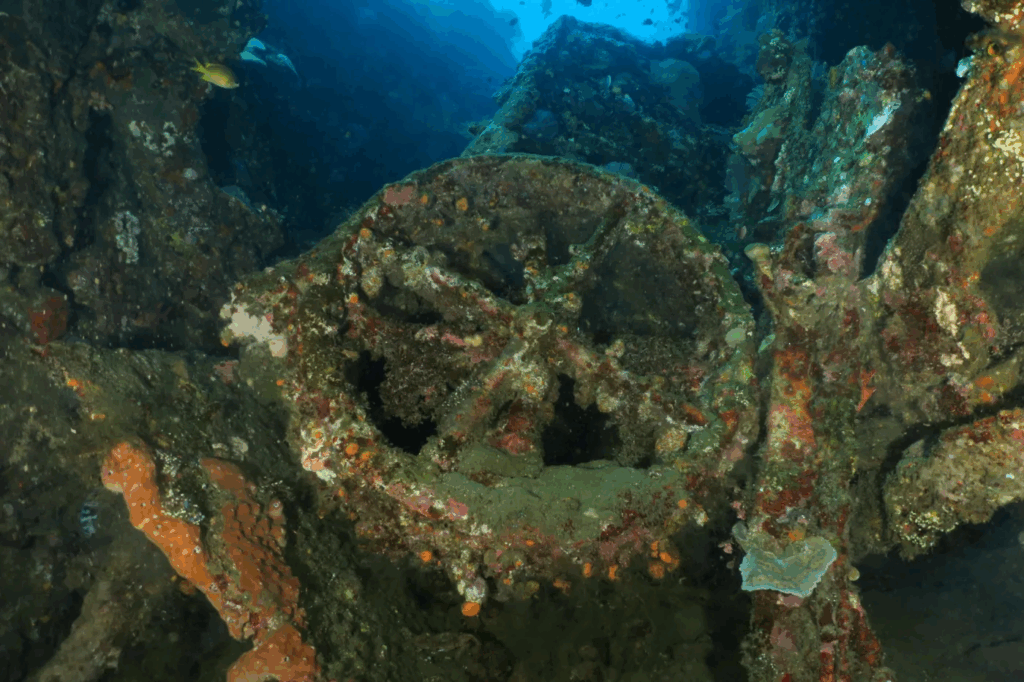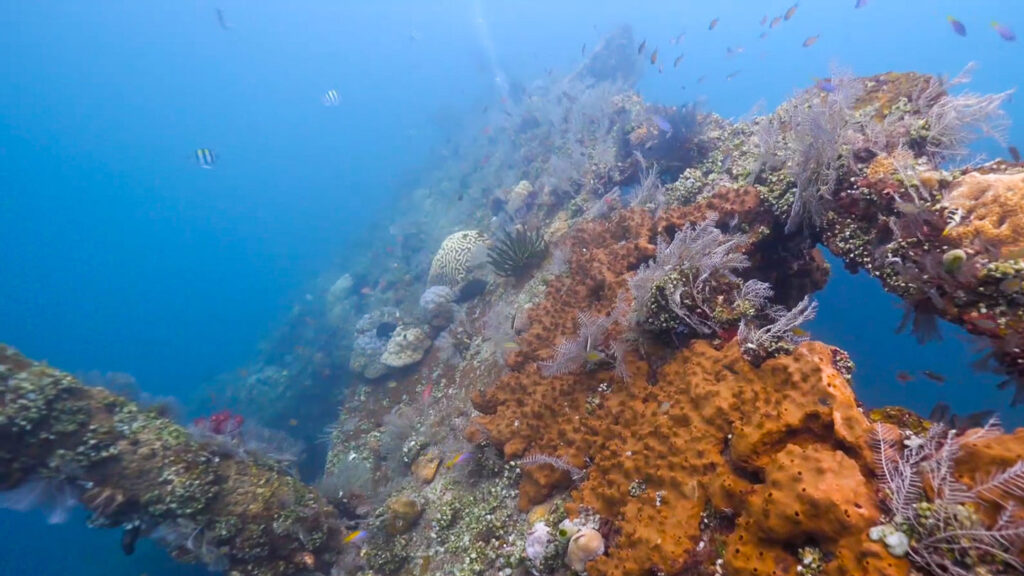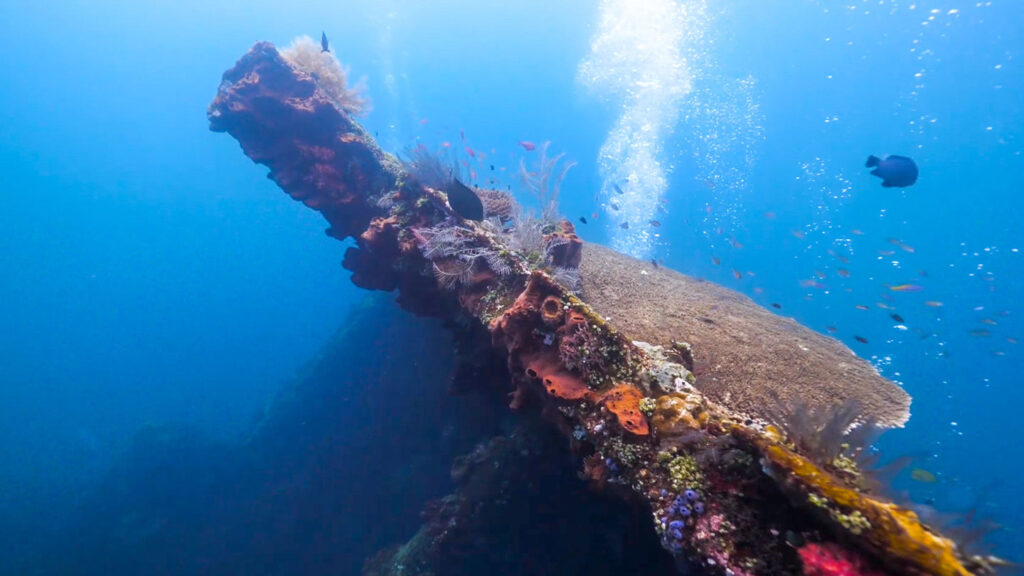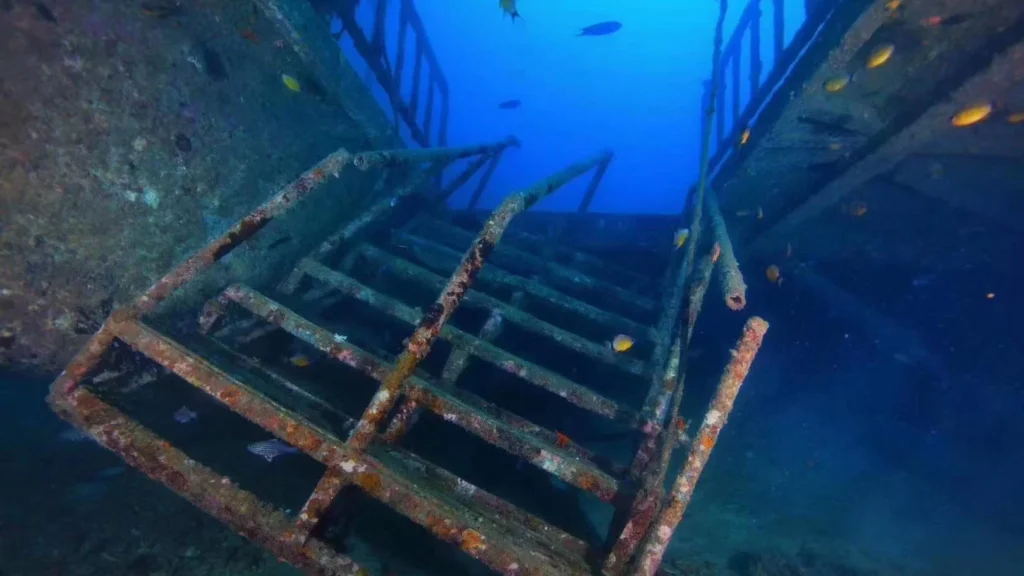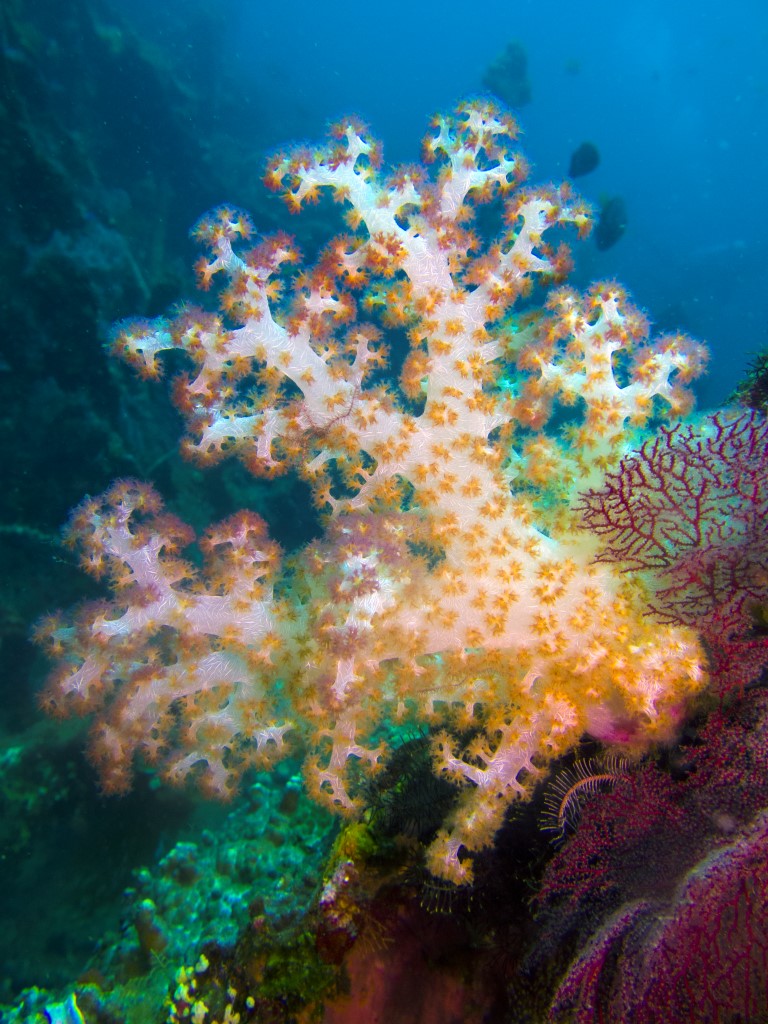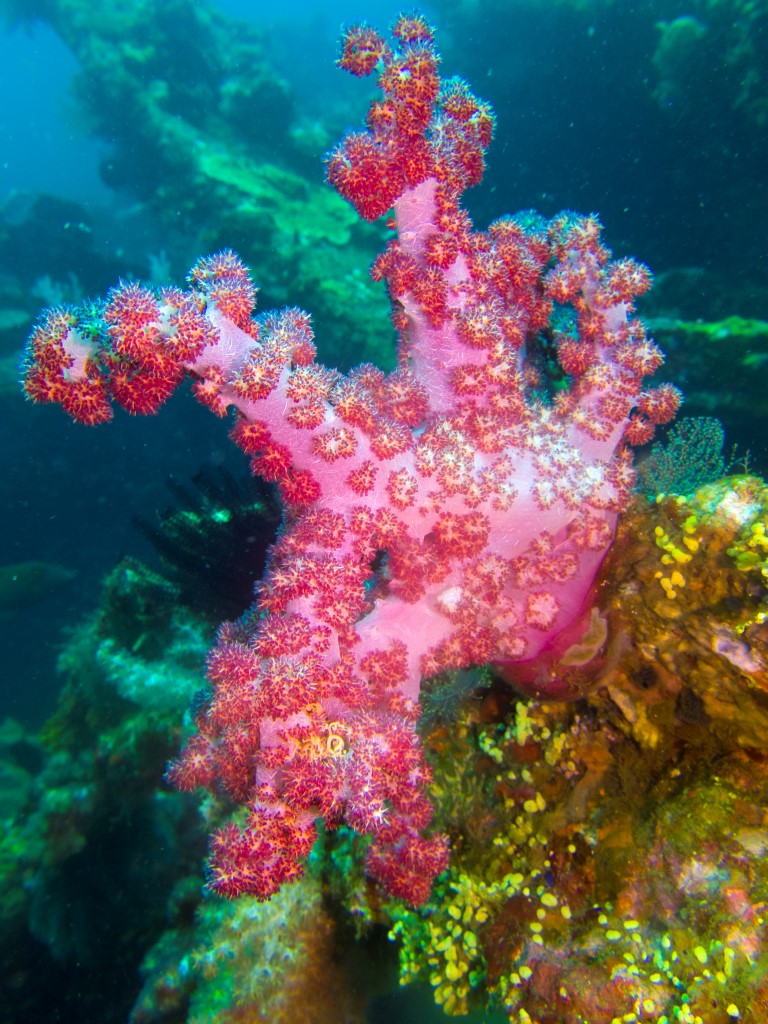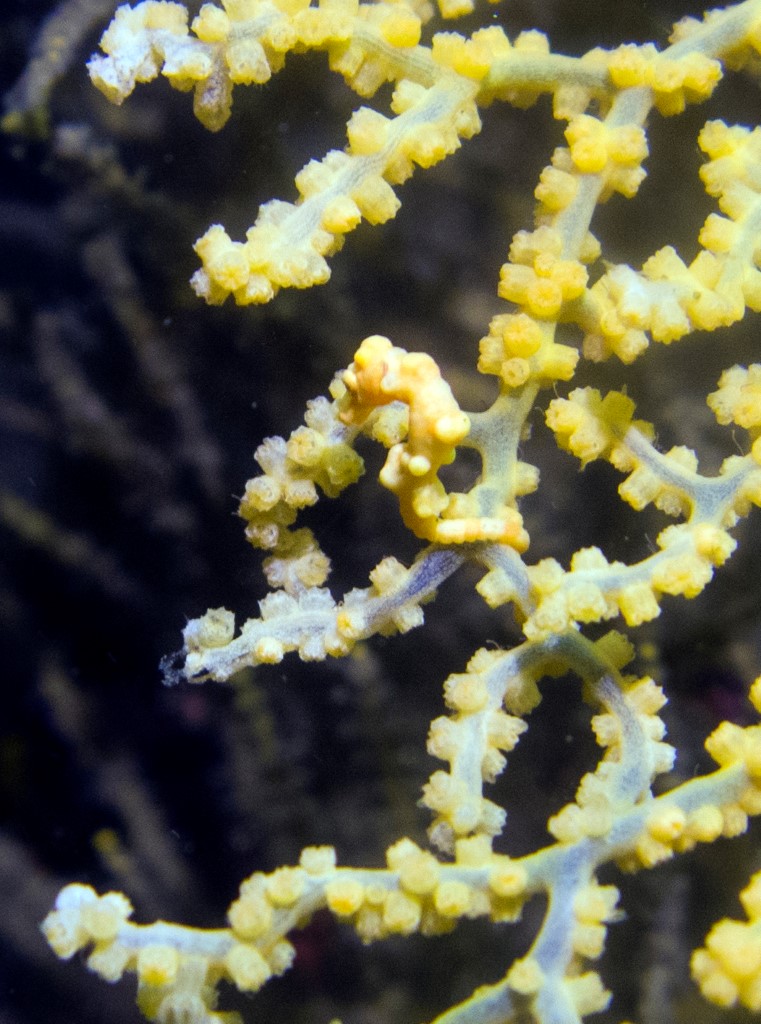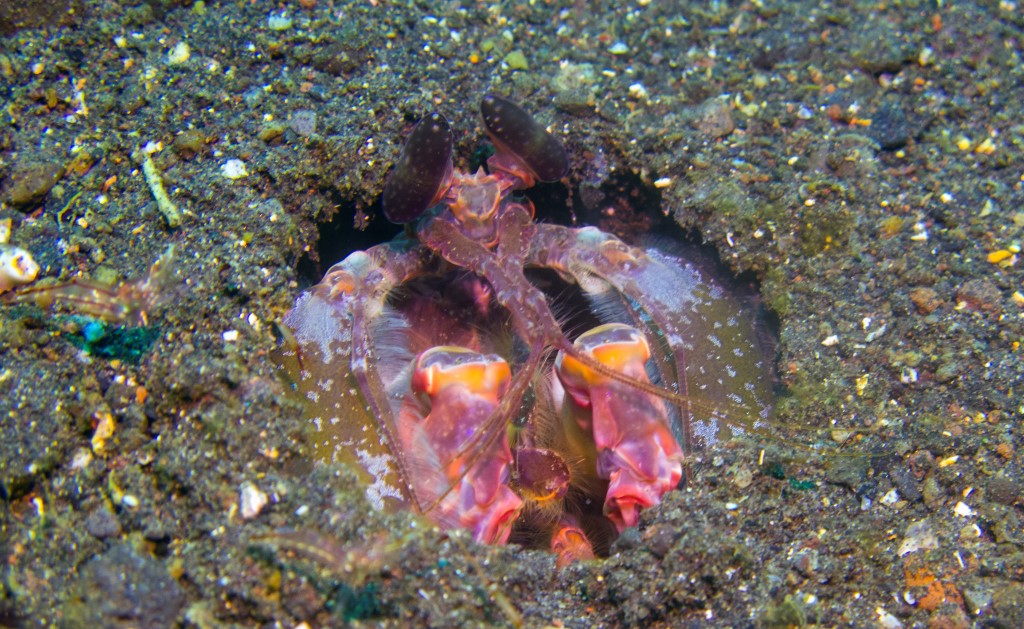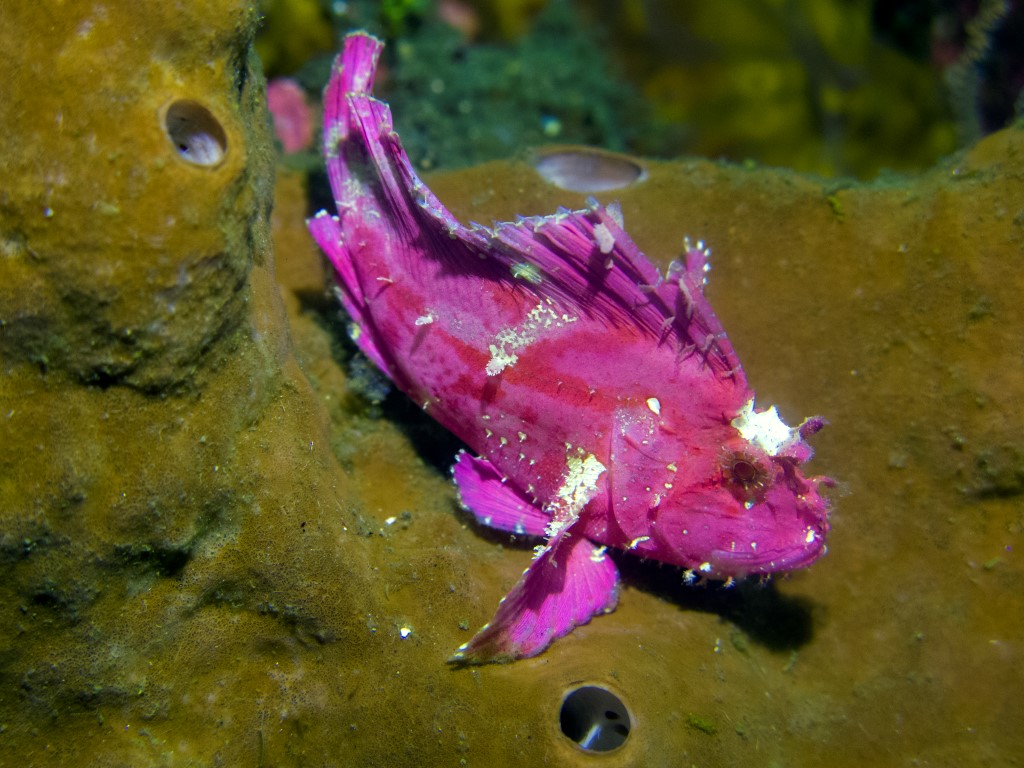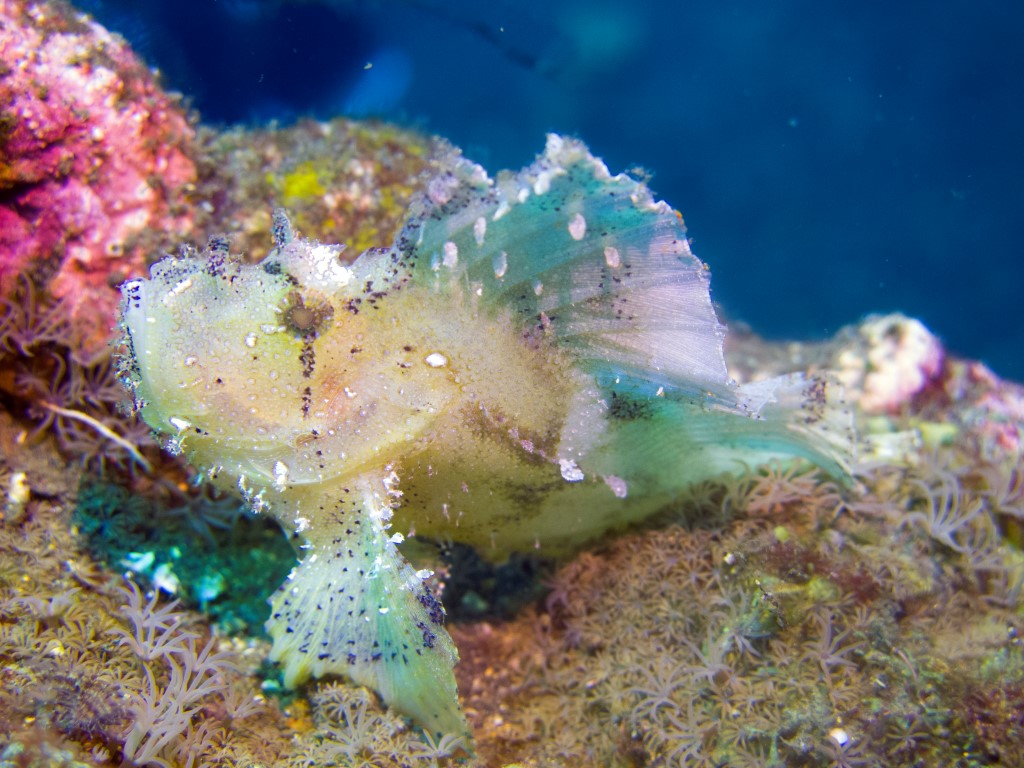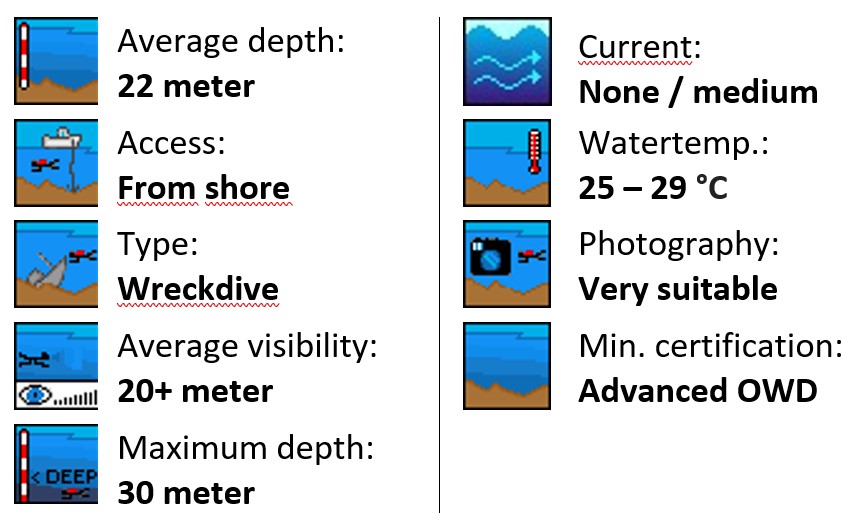USAT Liberty
(Tulamben Bali - Indonesia)
The USS Liberty wreck has put north Bali – specifically, the small village of Tulamben – firmly on the scuba diving map. Correctly named the USAT Liberty, this site attracts excited divers from far and wide, all drawn by the promise of exploring one of Indonesia’s best and most accessible shipwrecks.
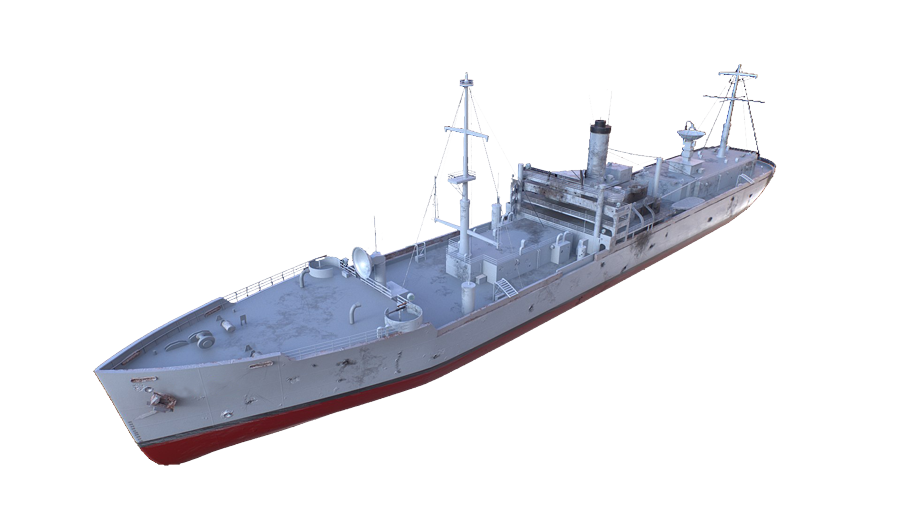
USAT Liberty (Tulamben Bali - Indonesia)
USS Liberty (ID-3461), was a transport ship launched in June 1918 and decommissioned in May 1919, and sunk in 1942 as USAT Liberty, a United States Army transport ship
The USS Liberty, originally a US Army cargo ship, has a storied past culminating in its current status as a popular dive site in Tulamben, Bali. Torpedoed during World War II, it was beached in Tulamben to salvage cargo, then later shifted into the sea by a volcanic eruption, becoming a vibrant artificial reef.
The USS Liberty, built in 1918, served as a cargo ship during both World Wars. In January 1942, while transporting railway parts and rubber from Australia to the Philippines, it was torpedoed by a Japanese submarine near Lombok.
The damaged ship was towed to Tulamben Bay in Bali to prevent it from sinking and to salvage its cargo.
In 1963, the eruption of Mount Agung caused tremors and an underwater landslide that pushed the Liberty further into the sea, where it settled on a sandy slope, becoming the wreck we see today.
The USS Liberty wreck, now a thriving artificial reef, is a popular dive site accessible to divers of all levels. It lies at a depth of 5 to 30 meters and is known for its abundant marine life and coral growth.
Marine biologists estimate that about 400 different species of reef fish live on the Liberty. On occation, this site is visited by big pelagic species. Turtles and blacktip reef sharks are a common sight
The story & the dive
The data
- Name: USS Liberty and later USAT Liberty
- Builder: Federal Shipbuilding Kearny, New Jersey
- Launched: 19 June 1918
- Commissioned: 7 October 1918
- Decommissioned: 7 May 1919 (Acquisition as USS Liberty (AK-35) cancelled)
- Fate: Beached, 11 January 1942
- Displacement: 13,130 tons
- Length: 125.43 m / 411 ft
- Beam: 17 m / 55 ft
- Draft: 8.08 m / 26 ft
- Speed: 20 km/h / 11 knots
- Armament: 1 × 6″ gun, 1 × 3″ gun
- Current location: -8.27396, 115.59307
The story
With a length of 125 meters and a width of 16 meters, the Liberty wreck is among the most accessible and renowned wreck diving sites in the world. Situated just 25 meters from the shore, with depths ranging from 5 to 30 meters, the Liberty wreck is accessible to snorkelers and divers of all levels.
She had been built as a Design 1037 ship for the United States Shipping Board in World War I
The Design 1037 ship (full name Emergency Fleet Corporation Design 1037) was a steel-hulled cargo ship design approved for production by the United States Shipping Board’s Emergency Fleet Corporation (EFT) in World War I.
A total of 48 ships were ordered and completed from 1918 to 1920
History of the USS / USAT Liberty
The construction
The USS Liberty is one of a series of 48 ships built in the USA between 1918 and 1920 by the Emergency Fleet Corporation. This corporation was established in 1917 in order to meet the demand for commerce during World War I.
The freighter known as USS Liberty was built at the Federal Shipbuilding Company in Kearney, New Jersey and launched on 19 June 1918.
She was commissioned into the United States Navy on 7 October 1918 with Lieutenant Commander Charles Longbottom in command.
World War I
Assigned to the Naval Overseas Transportation Service, Liberty departed the New York Navy Yard on 24 October 1918.
The new ship sailed from New York with a convoy bound for Bordeaux, France, but soon had to put back to New York for repairs before arriving at Brest, France on 8 November, then to St. Nazaire to deliver her cargo of horses and general supplies.
Returning to New York in December, she loaded general cargo and food supplies which she delivered at Le Havre, France, in January 1919.
A third round trip voyage followed in March and April, during which the freighter carried a general Army cargo to La Pallice, France and a cargo of steel rails back to the US.
Loaded with 436 tons of U.S. Army cargo and 2,072 tons of steel rails, Liberty arrived at Newport News, Virginia, on 30 April 1919 from her final cruise.
She was decommissioned there on 7 May and was returned to the United States Shipping Board the same day
Between Wars
During and after the war, the Liberty conducted multiple voyages between New York and France. It transported essentially horses, steel railway parts and general army cargo.
Between the wars while operating as a freighter she was involved in two maritime accidents.
On 20 October 1929, Liberty collided with the French tug Dogue at Le Havre, Seine Maritime, France. The Dogue sank and carried down the engineer and fireman, who were trapped in the engine room. The rest of the crew were saved.
On 23 November 1933, Liberty collided with the American cargo ship SS Ohioan in the Ambrose Channel. Ohioan was consequently beached near the West Bank Light. The Ohioan was refloated on 26 November.
By 1939, Liberty—although owned by the United States Maritime Commission (a successor to the USSB) was employed by the Southgate-Nelson Corporation of Norfolk, Virginia.
Southgate-Nelson was the operator of several packet lines, including the American Hampton Roads Line, the Yankee Line, and the Oriole Lines, but secondary sources do not indicate for which of these services Liberty sailed.
World War II
In November 1940, the Liberty was one of the ten ships taken by the US Army to join its defense fleet. As The United States entered the war in November 1941, the Liberty was already in the Pacific, fulfilling its role as a cargo vessel. In January 1942, the ship it was sailing from Australia to the Philippines with a cargo of railway parts and rubber
In May 1941 the Army and Navy agreed that the Navy would eventually take over and man the larger Army ships, and under this plan the Navy designation AK-35 was assigned to Liberty. The Navy was not able to find the personnel to man her, however, and she remained an Army ship hence the designation USAT Liberty. (United States Army Transport)
In in December 1941 (the United States jut entered World War II) the USAT Liberty was in the Pacific.
In January 1942, she was en route from Australia to the Philippines with a cargo of railway parts and rubber. Secondary accounts claim she was en route from Tanjong Priok (Batavia) carrying rubber from the North East Indies in her holds and explosives originating from the Philippines as deck cargo.
On 11 January at 04:15, the Liberty was torpedoed by Japanese submarine I-166 about 10 nautical miles (19 km) southwest of the Lombok Strait, and goes dead in the water at position 08°54_S 115°28_E.
US destroyer USS Paul Jones and Dutch destroyer Hr. Ms. Van Ghent took the damaged ship in tow attempting to reach Celukan bawang harbour at Singaraja on the north coast of Bali.
However she was taking too much water and so was beached on the eastern shore of Bali at Tulamben so that the cargo and fittings could be salvaged and then written off.
She capsized on 14 January.
The Japanese submarine I-166 saw extensive service in South East Asia and the Indian Ocean throughout the war and claimed several torpedo hits in that time.
On 17 July 1944 she was torpedoed and sunk in the Straits of Malacca at position 02°48_N 101°03_E by British submarine HMS Telemachus (P321)
Post War History
The empty ship was resting on the beach until another historical event, the eruption of Mount Agung in 1963.
This dramatic eruption killed over 1500 people and destroyed 1700 houses.
The seismic activity from the eruption pushed the ship back into the ocean, settling on a black sand slope, just 25 meters from the shore.
It is this volcanic event that unexpectedly created an extraordinary dive site, attracting divers from all over the world.
The dive
Diving the USAT Liberty Wreck is fascinating to both history enthusiasts and diving aficionados. The shipwreck’s accessible depth, ranging from 5 to 30 meters, accommodates divers of different experience levels.
One remarkable aspect of this site is the ease of access to the wreck: a simple shore entry and less than 30 meters to cover before reaching the wreck. The clear waters and the abundance of marine life make the Liberty an ideal spot for underwater photography enthusiasts. Divers encounter various corals and fish species. From giant garden eels to sweetlips, turtles, humphead parrotfish and reef sharks, the Liberty wreck is teeming with life.
Exploring the USAT Liberty wreck during daylight offers an incredible experience. However, diving into this famous site at night reveals a stunning display of vibrant colors and marine life. This provides a completely different perspective of the USAT Liberty.
For many divers, a night dive on the Liberty stands out as one of their most memorable experiences.
Exploring a sunken wreck evokes a sense of being a treasure hunter or an archaeologist. Yet, navigating the same wreck in darkness, armed with a powerful flashlight, amplifies the intensity of the adventure.
Divers can venture into the wreck’s passages and cargo holds, encountering remnants of the ship’s history. From deck guns to bathrooms, eerie yet fascinating remains of the ship’s past await exploration.
The wreck stands not only as a sunken relic from history but also as a vibrant underwater ecosystem. It offers an unforgettable diving experience that beautifully intertwines nature and the remnants of a significant historical event.
The USS Liberty is rightly considered one of the best wreck dives in the entire world, and it’s surprisingly accessible. Today, this vessel lies roughly 50 meters from the shore, with its bow pointing approximately due north.
At its shallowest point, the wreck is roughly three-metres deep, whilst the deepest sections lie at almost 30-metres, where parts of the superstructure and debris can be found scattered on the sandy bottom.
Some sections of the vessel’s port side and hull have been buried by sand but vertical remains of the deck and superstructure – as well as parts of the engine room, hold and bow – can all still be explored.
In fact, whilst the wreck is ‘only’ 120-metres long, the site can be explored again and again as there is so much to see.
A typical dive on the wreck starts with a Tulamben tradition – having your gear carried down to the beach by one of the ladies of the village collective. From there, it is a simple shore-entry from the pebble beach and then a short swim across black sand, more pebbles and a few small patches of reef before the stern is reached. The rudder is now missing but divers can swim through a gap where it used to be, then along the hull past a series of portholes towards the remains of the Liberty’s upper decks.
At around 25-metres lies some fallen superstructure with the stern gun still in place. Heading north, divers swim past a winch with steel cables, a collapsed bulkhead and the remains of the engine room where the shape of boilers and gears can still be made out beneath the coral and corrosion.
Further still along the deeper section of the wreck lies more debris scattered on the sandy bottom at around 30-metres, plenty of wreckage with some incredible soft coral, and even toilets and showers which can be investigated with care.
Divers then reach the break in the hull where large metal plates lie scattered on the bottom. At the bow section beyond the split, there are several swim-throughs and overhangs beneath the remains of more superstructure and several booms. These are all filled with beautiful soft corals, gorgonian fans and big tubastrea colonies. On the foredeck the shape of the gun can still be made out at around 20-metres, well hidden beneath a barrel sponge and plenty of soft corals.
At the end of the wreck, the anchor chain can be seen lying on the sand at 30-metres. From this point, it is time to turn towards the shore and back around the shallow side of the bow section. Here the hull has almost completely disappeared beneath a heavy covering of hard corals and sponges that hide much of the original surface.
Divers then pass back across the break and can enter the hold, a ‘room’ filled with vertical columns – perfect for shooting natural light silhouettes of divers as they explore the large area.
From here divers normally swim back towards the stern across the top of the wreck or cross to the shore side and swim along the hull. Both areas have prolific life with big black coral bushes, soft corals and hard corals and an incredible amount of fish life.
(Click to enlarge)
The flora & fauna
For most visitors, it isn’t the remains of the wreck itself that is the big attraction. Rather, it is the diversity of life that has been attracted to the site. Biologists estimate that over 400 species of fish make their home on the Liberty, plus plenty of passing pelagic visitors – a huge number for such a small site.
The combination of deep water close by, nutrient-rich currents, and the variety of different habitats around the area, means that everything from the tiniest pygmy seahorse, to giants such as mola mola have all been seen on the Liberty.
And as well as actual diversity, it is the sheer numbers of fish that makes the site stand out from pretty much any other in Bali.
Reef species.
General reef life is prolific on the Liberty.
There are large numbers of surgeonfish, anthias and other damsels, parrotfish, butterflyfish and angelfish. There are gobies and blennies, moray eels and garden eels, hawkfish, mullet, rabbitfish, bannerfish, moorish idols, trumpetfish and goatfish.
Triggerfish can be seen nesting in the sand whilst scorpionfish and leaf scorpionfish lie camouflaged amongst the corals.
There are different types of lionfish, sweetlips and anemonefish, big snappers and emperors, batfish, schools of sergeant majors, filefish, pufferfish and boxfish.
Pelagics
Big animals also make appearances with Napoleon wrasse often being spotted, the occasional shark and eagle ray seen on the sand below the wreck and larger pelagics, such as Spanish mackerel, that come onto the wreck to charge through the schools of smaller fish as they hunt.
Once divers have had their fill of the fish life, they can then start to appreciate the fact that the species diversity continues with invertebrates such as nudibranchs and crustaceans. Some interesting critters that can be found include ghost pipefish, pygmy seahorses, frogfish, octopuses and cuttlefish.
Conclusion
The USS Liberty is a significant wreck and is a popular dive site amongst scuba divers and tourists.
The best time to dive at the USS Liberty shipwreck Tulamben is during the dry season from May to October, when the water is warm and the visibility is good.
There are many interesting things to be aware of when visiting the USS Liberty.
Don’t forget to take a look at the amazing marine life on ad aroun the wreck!
Bring a camera, and remember to respect the wreck and the artifacts that are still in place.
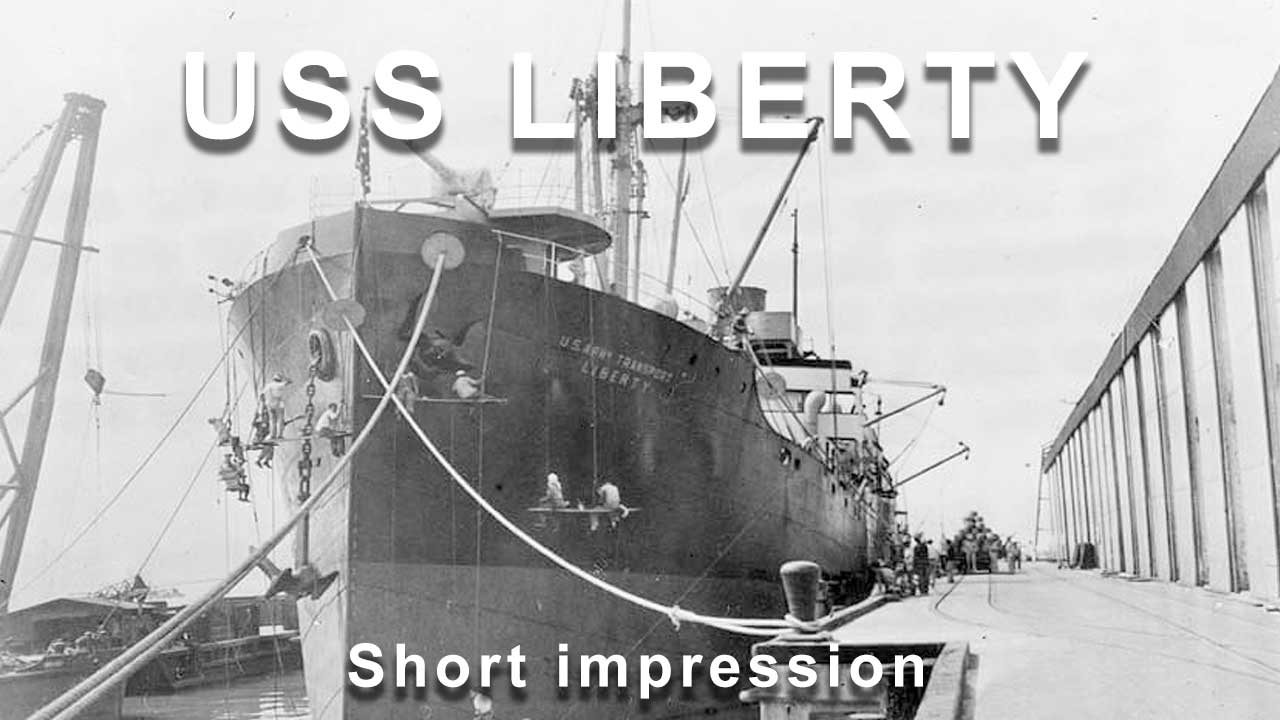
Short impression of diving the USS Liberty
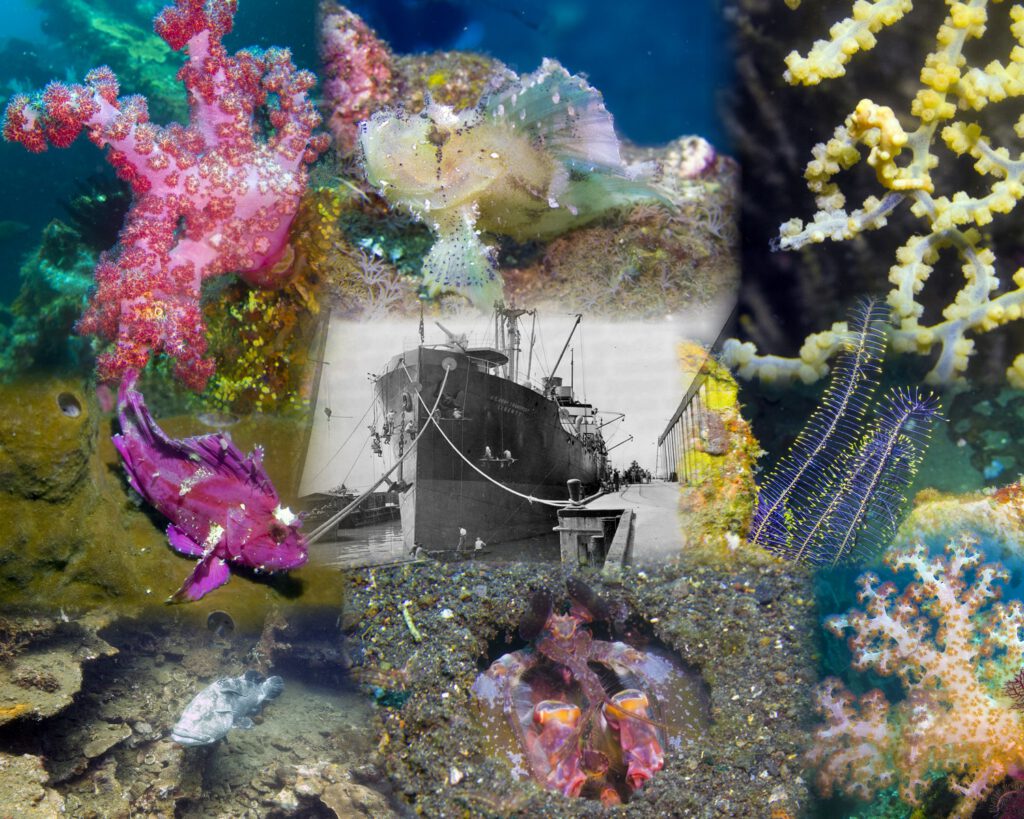
Click to enlarge


